Yoga for Lung Health: Breathe Easy with These 9 Powerful Poses
Discover powerful Yoga for Lung Health. Learn how to breathe easier, increase lung capacity, and improve overall respiratory function through yoga.
Quick Summary Yoga for lung health
Can significantly improve respiratory function. Practice these 9 poses daily:
- Bharadvaja’s Twist
- Bridge Pose
- Bow Pose
- Cat-Cow Pose
- Cobra Pose
- Extended Side Angle Pose
- Fish Pose
- Seated Forward Bend
- Triangle Pose
Introduction
As a certified yoga instructor who’s been practicing for over a decade, I’ve seen firsthand how yoga for lung health can transform people’s lives. Whether you’re recovering from respiratory issues, looking to increase your lung capacity, or simply want to breathe easier, these 9 powerful yoga poses can help you achieve your goals.
Why Yoga for Lung Health Matters?
Before we dive into the poses, let’s quickly explore why yoga for lung health is so effective:
- Improves breathing technique
- Increases lung capacity
- Strengthens respiratory muscles
- Reduces inflammation in airways
- Enhances oxygen uptake
- Promotes relaxation, reducing stress on the respiratory system
Yoga for Lung Health: 9 poses for easy breathing
Now, let’s explore each pose.
1. Bharadvaja’s Twist (Bharadvajasana)
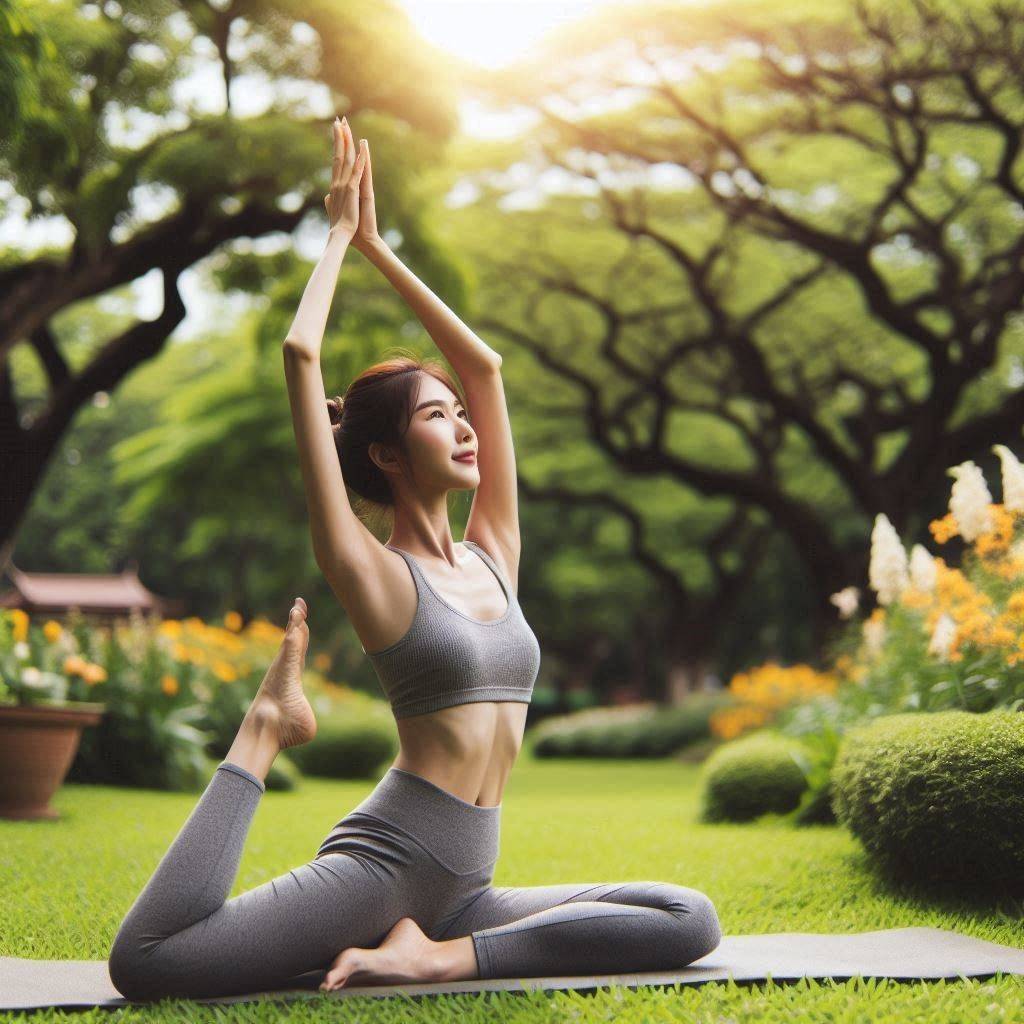
Yoga for lung health often includes twisting poses, and Bharadvaja’s Twist is one of the best. Here’s why I love this pose:
- Expands the chest, creating more space for the lungs
- Massages abdominal organs, improving overall circulation
- Releases tension in the spine, promoting better posture for easier breathing
How to do it:
- Sit on the floor with your legs extended.
- Bend your knees and swing them to the left side.
- Place your right hand on the floor behind you and your left hand on your right knee.
- Inhale deeply, lengthening your spine.
- Exhale and twist to the right, looking over your right shoulder.
- Hold for 5-10 breaths, then repeat on the other side.
Pro tip: Focus on breathing deeply into your rib cage as you twist. I’ve found this helps to increase the stretch and improve lung expansion.
2. Bridge Pose (Setu Bandha Sarvangasana)

Bridge Pose is a fantastic yoga for lung health posture that opens the chest and strengthens the upper back. Here’s why it’s so effective:
- Opens the chest and throat, allowing for deeper inhalations
- Strengthens the upper back muscles, improving posture for better breathing
- Stimulates the thyroid gland, which can boost metabolism and energy levels
How to do it:
- Lie on your back with your knees bent and feet flat on the floor.
- Place your arms alongside your body, palms down.
- Press your feet and arms into the floor as you lift your hips towards the ceiling.
- Roll your shoulders underneath you and clasp your hands together.
- Hold for 30-60 seconds, breathing deeply into your chest.
Personal experience: When I first started practicing Bridge Pose, I noticed an immediate improvement in my ability to take deep, full breaths. It’s now a staple in my daily yoga for lung health routine.
3. Bow Pose (Dhanurasana)
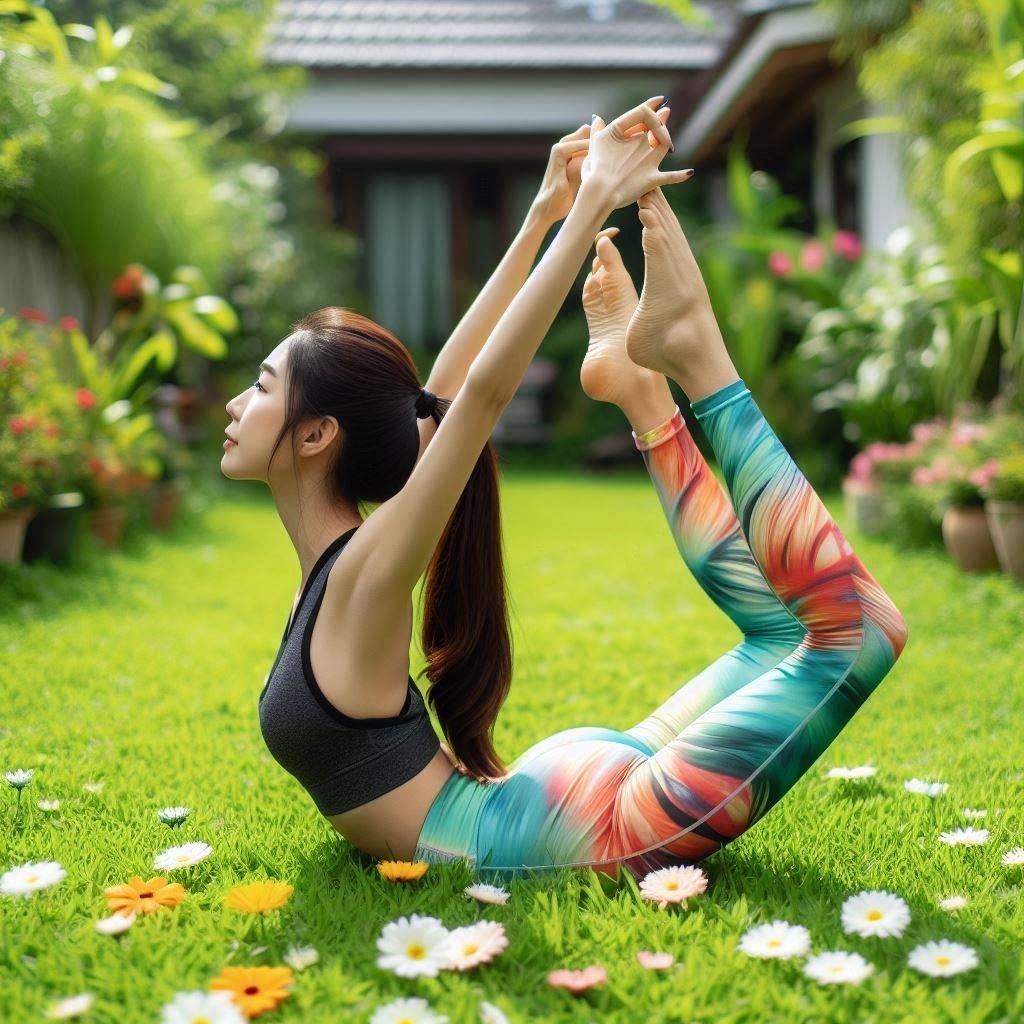
Bow Pose is a powerful backbend that opens up the chest and stimulates the lungs. Here’s why it’s great for yoga for lung health:
- Expands the chest and stretches the intercostal muscles between the ribs
- Massages the abdominal organs, improving digestion and circulation
- Strengthens the back muscles, promoting better posture
How to do it:
- Lie face down on your mat.
- Bend your knees and reach back to grab your ankles.
- As you inhale, lift your chest and thighs off the ground.
- Hold for 20-30 seconds, breathing deeply.
- Release and rest in the Child’s Pose.
Safety note: If you have any back issues, please consult with a healthcare professional before attempting this pose.
4. Cat-Cow Pose (Marjaryasana-Bitilasana)
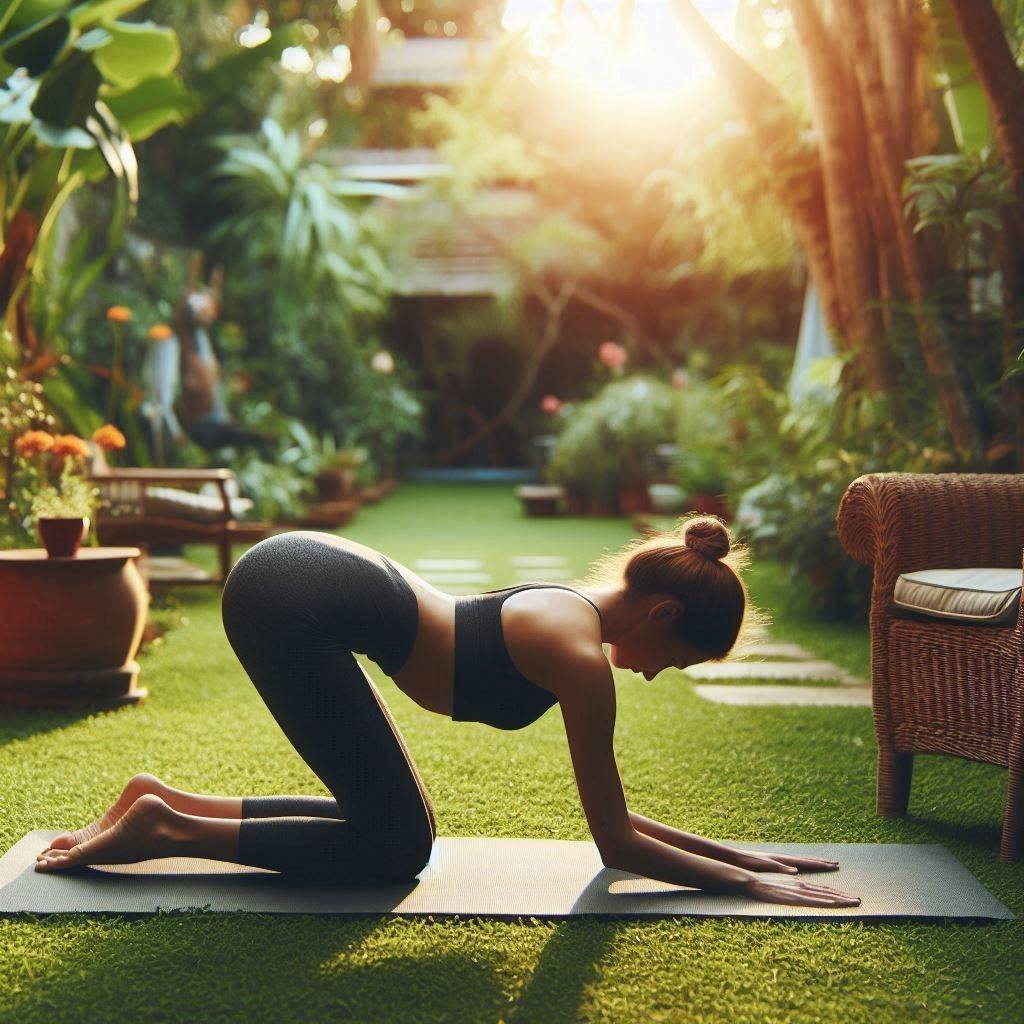
The Cat-Cow sequence is a gentle yet effective yoga for lung health practice. Here’s why I recommend it to all my students:
- Encourages deep, rhythmic breathing
- Gently massage the organs in the abdominal area
- Improves spinal flexibility, which can enhance breathing capacity
How to do it:
- Start on your hands and knees in a tabletop position.
- As you inhale, drop your belly and lift your gaze (Cow Pose).
- As you exhale, round your spine and tuck your chin (Cat Pose).
- Continue this flow for 1-2 minutes, synchronizing your breath with the movement.
Breathing tip: Focus on making your exhales slightly longer than your inhales. This can help activate the parasympathetic nervous system, promoting relaxation and deeper breathing.
5. Cobra Pose (Bhujangasana)
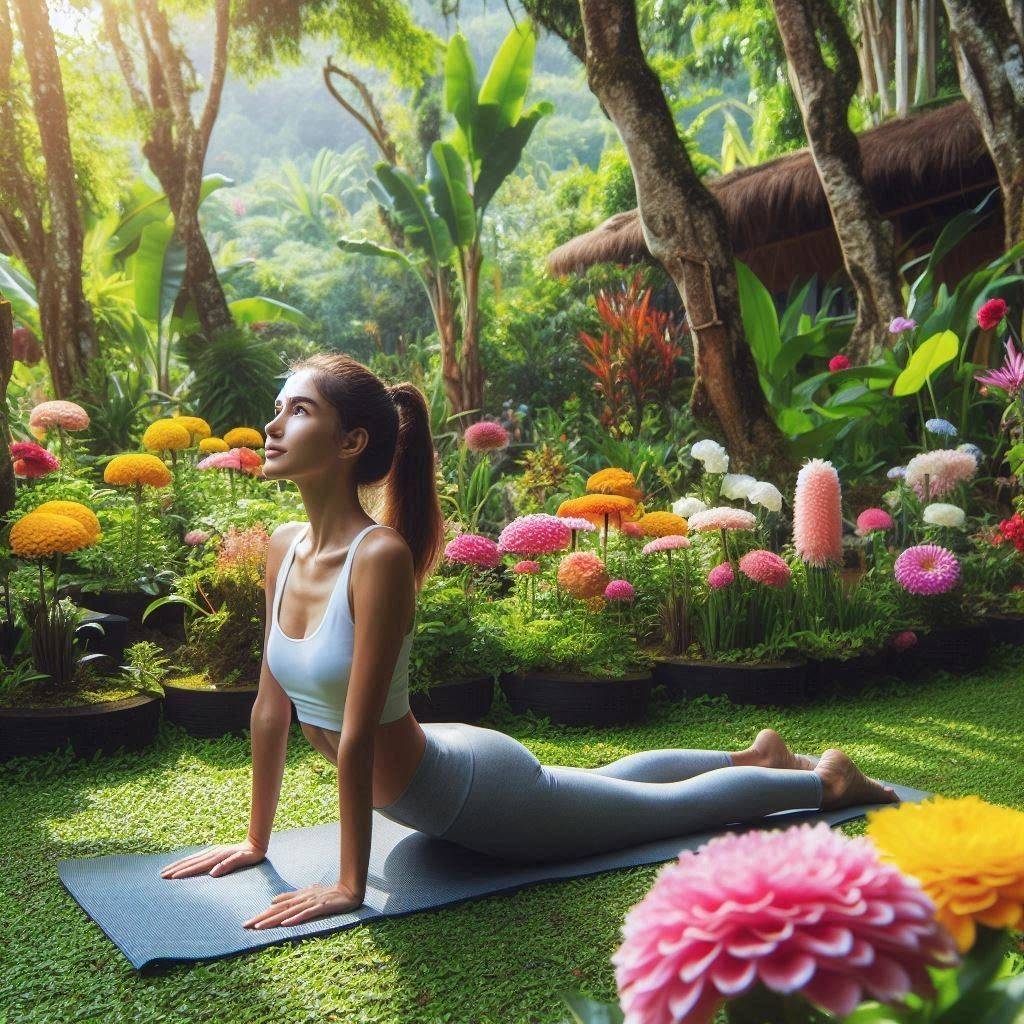
Cobra Pose is a classic backbend that’s excellent for yoga for lung health. Here’s why it’s so beneficial:
- Opens the chest and lungs, allowing for deeper breaths
- Strengthens the back muscles, improving posture
- Stimulates the abdominal organs, aiding in digestion
How to do it:
- Lie face down on your mat with your hands under your shoulders.
- Press the tops of your feet into the mat.
- As you inhale, lift your chest off the ground, keeping your lower ribs on the mat.
- Hold for 15-30 seconds, breathing deeply.
- Exhale and lower back down.
Personal insight: I’ve found that practicing Cobra Pose regularly has significantly improved my lung capacity. It’s particularly helpful if you spend a lot of time sitting at a desk.
6. Extended Side Angle Pose (Utthita Parsvakonasana)

Extended Side Angle Pose is a fantastic yoga for lung health posture that opens the side body. Here’s why it’s so effective:
- Stretches the intercostal muscles, allowing for greater lung expansion
- Opens the chest and throat, promoting deeper breathing
- Strengthens the legs and core, improving overall stability
How to do it:
- Start in Warrior II pose with your right foot forward.
- Lower your right forearm onto your right thigh.
- Extend your left arm overhead, creating a straight line from your left foot to your left fingertips.
- Turn your head to look up at your left arm.
- Hold for 30-60 seconds, breathing deeply into your left rib cage.
- Repeat on the other side.
Breathing technique: Try to focus on breathing into the stretched side of your body. You should feel a nice expansion in your rib cage.
7. Fish Pose (Matsyasana)

Fish Pose is a powerful chest opener that’s excellent for yoga for lung health. Here’s why I love including it in my practice:
- Opens the chest and throat, allowing for deeper inhalations
- Stretches the intercostal muscles and diaphragm
- Can help relieve respiratory issues like asthma and bronchitis
How to do it:
- Lie on your back with your legs extended.
- Place your hands, palms down, under your buttocks.
- Press your forearms and elbows into the mat as you lift your upper body.
- Arch your back and lift your chest towards the ceiling.
- You can either keep your head on the mat or gently lower it back if it’s comfortable.
- Hold for 15-30 seconds, breathing deeply.
Caution: If you have neck or back issues, please consult with a healthcare professional before attempting this pose.
8. Seated Forward Bend (Paschimottanasana)
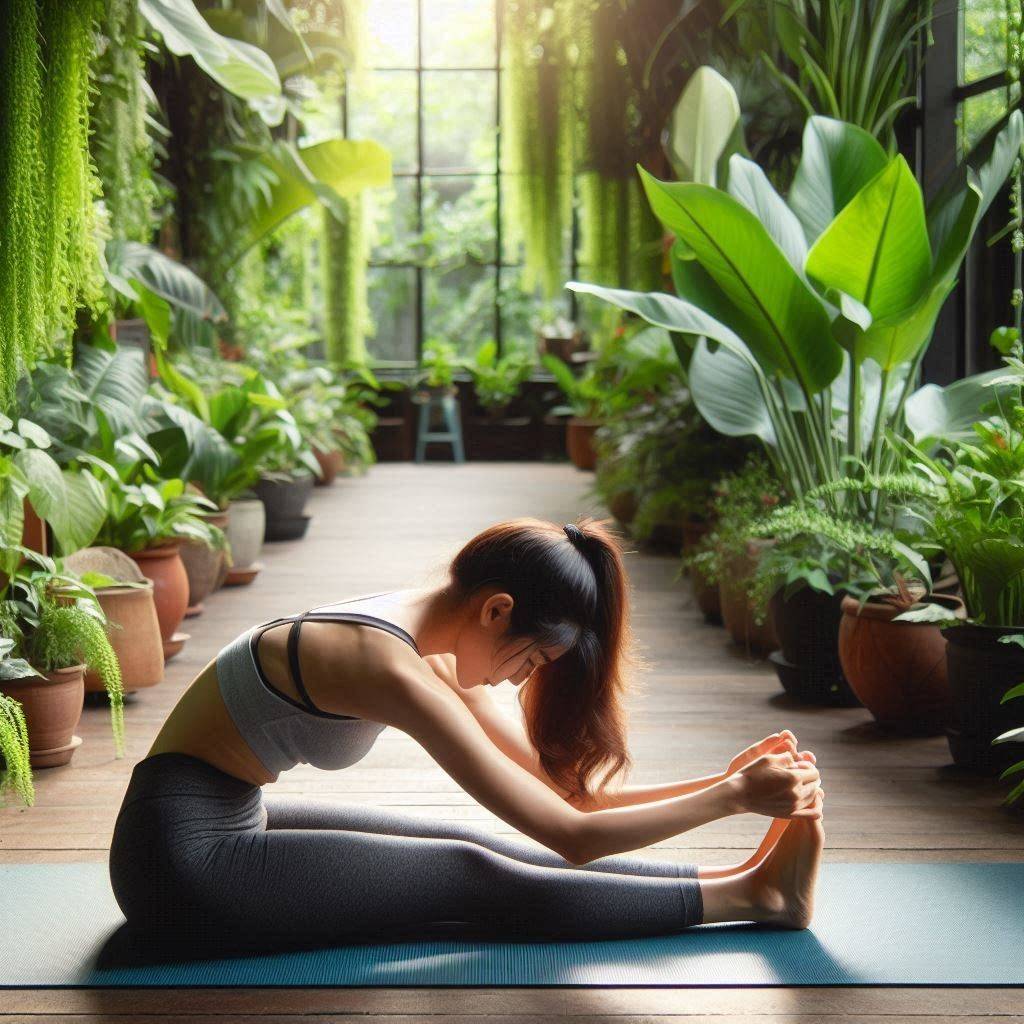
While it might not seem obvious, Seated Forward Bend is great for yoga for lung health. Here’s why:
- Stretches the entire back body, creating more space for the lungs to expand
- Calms the mind, reducing stress and promoting deeper breathing
- Improves digestion, which can indirectly support better breathing
How to do it:
- Sit on the floor with your legs extended in front of you.
- Inhale deeply, lifting your arms overhead and lengthening your spine.
- As you exhale, hinge at your hips and reach for your feet.
- If you can’t reach your feet, use a yoga strap or hold onto your shins.
- Hold for 30-60 seconds, focusing on deep, even breaths.
Breathing tip: As you fold forward, imagine your breath travelling down your spine and into your legs. This visualization can help deepen your breath and increase the stretch.
9. Triangle Pose (Trikonasana)
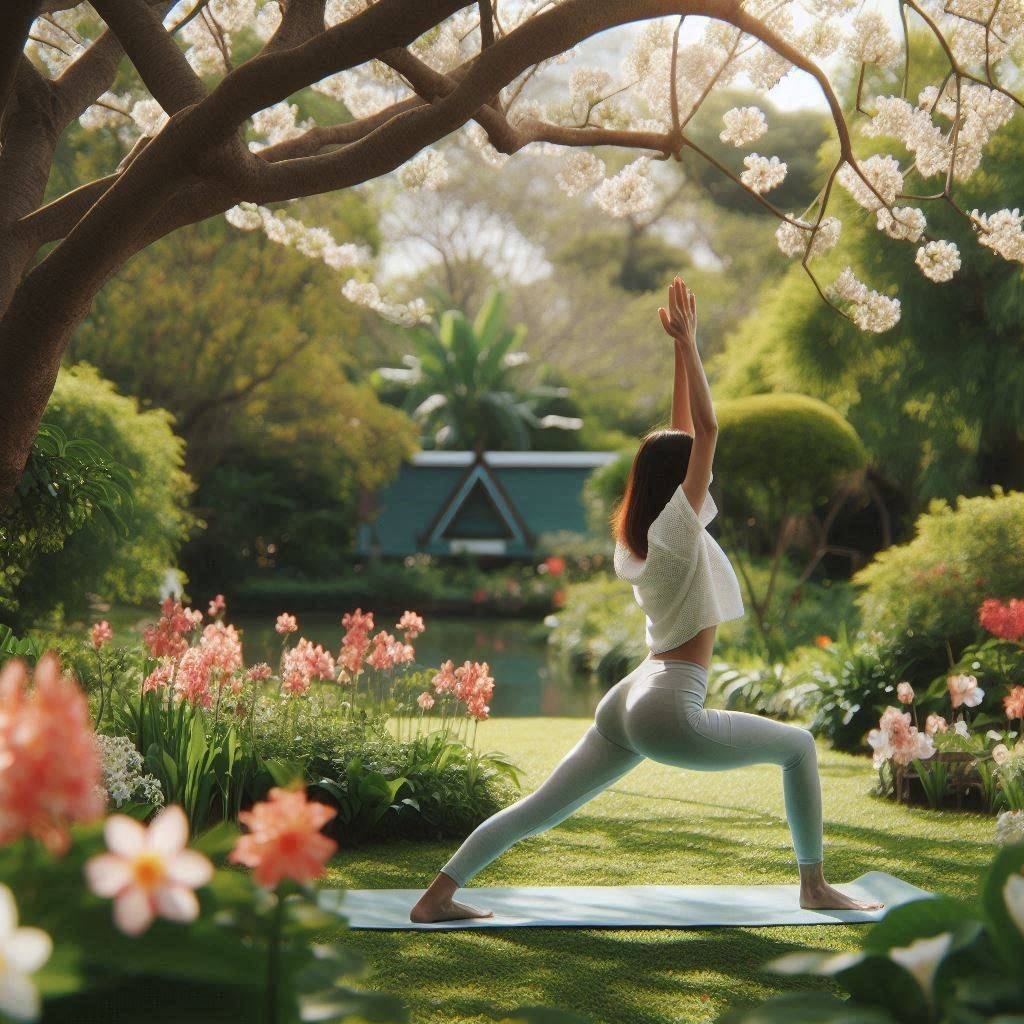
Triangle Pose is a fantastic all-around pose that’s particularly good for yoga for lung health. Here’s why:
- Opens the chest and throat, allowing for deeper breathing
- Stretches the intercostal muscles, increasing lung capacity
- Strengthens the legs and core, improving overall stability
How to do it:
- Stand with your feet wide apart, right foot turned out 90 degrees.
- Extend your arms parallel to the floor.
- Reach your right hand down towards your right foot, extending your left arm towards the ceiling.
- Turn your gaze up towards your left hand.
- Hold for 30-60 seconds, breathing deeply into your rib cage.
- Repeat on the other side.
Personal experience: I’ve found that practicing Triangle Pose regularly has significantly improved my lung capacity and overall breathing. It’s now a staple in my yoga for lung health routine.
FAQs: Yoga for Lung Health
Which yoga is best for the lungs?
While many yoga styles can benefit lung health, I’ve found that Hatha and Vinyasa yoga are particularly effective for improving respiratory function. These styles often include poses that open the chest, engage the diaphragm, and promote deep, conscious breathing. The 9 poses we’ve covered in this post are excellent examples of yoga for lung health postures.
What is the best exercise for lung function?
In my experience as a yoga instructor, a combination of yoga poses, and pranayama (breath control) exercises provides the best results for lung function. Specific exercises that I’ve found particularly effective include:
- Kapal Bhati Pranayama (Skull Shining Breath)
- Anulom Vilom (Alternate Nostril Breathing)
- The 9 yoga poses detailed in this post
[IMAGE HERE: Add an infographic showing these three types of exercises and their benefits for lung function]
Can yoga detox lungs?
While “detox” is a bit of a buzzword, yoga can indeed help cleanse and rejuvenate the lungs. Yoga for lung health works by:
- Improving breathing technique
- Increasing lung capacity
- Enhancing circulation to lung tissue
- Promoting the release of stagnant air from the bottom of the lungs
These benefits can help your lungs function more efficiently, aiding in the natural process of removing toxins and waste products.
How does yoga improve lung function?
Yoga for lung health improves lung function through several mechanisms:
- Deepening the breath: Many yoga poses encourage deep, full breaths that utilize the full capacity of the lungs.
- Strengthening respiratory muscles: Poses like Bow Pose and Bridge Pose strengthen the muscles involved in breathing.
- Increasing flexibility: Poses that open the chest and stretch the intercostal muscles allow for greater lung expansion.
- Reducing stress: The relaxation induced by yoga can lead to slower, deeper breathing patterns.
- Improving posture: Many yoga poses help correct posture, which can enhance breathing mechanics.
Conclusion
Incorporating these 9 powerful poses into your regular yoga for lung health practice can significantly improve your respiratory function, boost your energy levels, and enhance your overall well-being. Remember to practice mindfully, listen to your body, and most importantly, breathe deeply. Thank you for joining me on this journey to better lung health through yoga!
Recommended Reading



